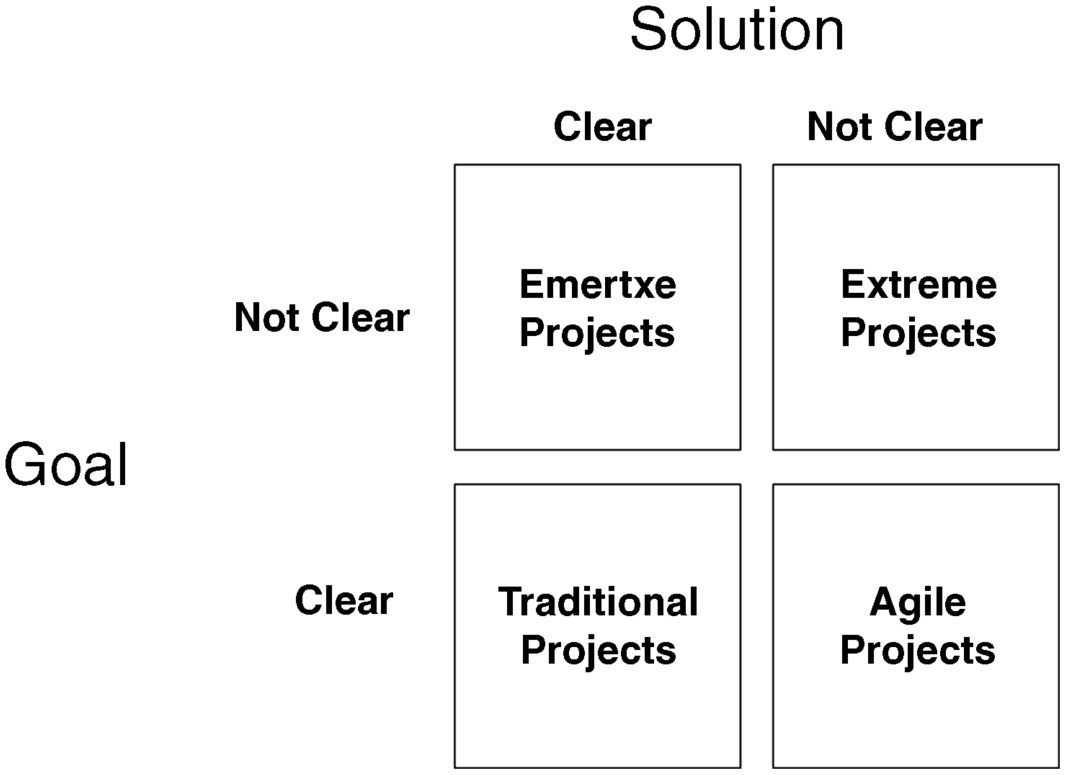Executive's Guide to Project Management: Organizational Processes and Practices for Supporting Complex Projects
by Robert K. Wysocki
Goal and Solution Clarity
I like simple and intuitive models and I spent a lot of time defining and redefining project categories before I found a classification scheme that met my criteria and my specific needs. The one I am using here I have used for almost 20 years. It works and has never failed to live up to my expectations.
Every project has a goal and hopefully there is a plan that defines how you will reach that goal (a.k.a. a solution). So I define the project landscape around the two fundamental project variables: goal and solution. In my classification scheme these two variables can have only one of two values: clear or not clear. I experimented with more than two values for each variable but that only added complication without adding value. Those two values for each variable generate the four-quadrant matrix shown in Figure 1.2.
Figure 1.2 The Four Quadrants of the Project Landscape

I don't know where the dividing line is between clear and not clear but that is not important to this landscape anyway. These values are conceptual not quantifiable. A given project can exhibit various degrees of complexity and uncertainty that position it in one of the four quadrants at a particular point in time. As a project is undertaken the complexity and uncertainty originally associated with it will often change. That could justify changing its quadrant and also changing how the project ...